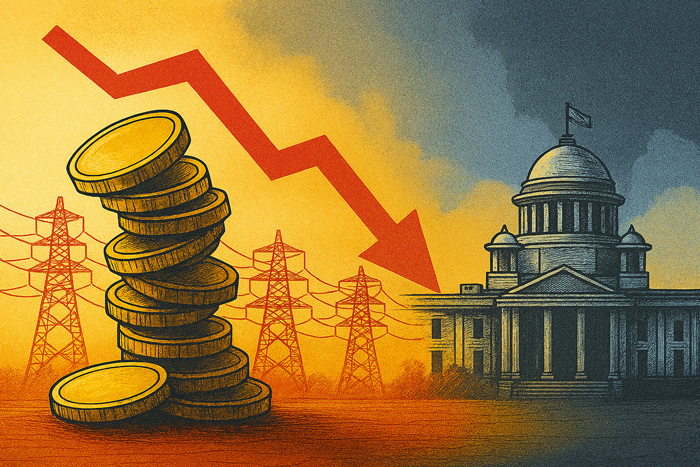The rating agency further expects the Supreme Court’s recent directive for all state electricity regulatory commissions to liquidate legacy regulatory assets will trigger steep tariff hikes across several states, necessitating state government support for effective implementation.
Rating agency ICRA has retained a negative outlook on India’s power distribution sector, citing weak operational efficiencies, inadequate tariff revisions, and rising debt levels.
Regulatory assets for seven major state-owned distribution companies (discoms) remain elevated at approximately ₹3 trillion, driven primarily by Tamil Nadu, Uttar Pradesh and Rajasthan, which together account for the bulk of the total. Other contributing states include Maharashtra, Delhi, West Bengal and Karnataka.
Regulatory assets are costs that power companies are allowed to recover later because current electricity tariffs don’t fully cover their supply expenses.
The Supreme Court recently directed all state electricity regulatory commissions to liquidate legacy regulatory assets within four years and capped the creation of new regulatory assets at 3 per cent of the annual revenue requirement. The Appellate Tribunal for Electricity has been tasked with monitoring compliance and enforcing accountability.
In a landmark ruling on petitions filed by Delhi’s discoms and regulatory commission, the apex court cited systemic regulatory failure in tariff governance and regulatory asset management. The directive is expected to trigger steep tariff hikes across several states, necessitating state government support for effective implementation.
“Complying with the SC directive would thus necessitate steep tariff hikes across these states, which would in turn require state government support for effective implementation,” said Girishkumar Kadam, Senior Vice President & Group Head of Corporate Ratings, ICRA. “Apart from improvement in operating efficiencies, regulatory reforms to ensure timely issuance of tariff orders with cost-reflective tariffs remain critical to achieve a sustainable improvement in discom finances going forward.”
Muted Tariff Revisions
As of August 2025, tariff orders for FY2026 have been issued in 23 out of 28 states, which is moderate progress, given the March 2025 deadline. The median tariff hike at the national level stands at just 1.9 per cent for FY2026, down from 2.1 per cent in FY2025, reflecting continued reluctance to align tariffs with actual supply costs.
The gap between the average cost of supply and average revenue realisation stood at 46 paise per unit in FY2024. ICRA estimates that bridging this gap would require an average tariff hike of 4.5 per cent, alongside reducing aggregate technical and commercial (AT&C) losses to below 15 per cent.
The implementation of the Fuel and Power Purchase Adjustment Surcharge (FPPAS) mechanism remains patchy, despite its notification in December 2022. Only a few states have fully operationalised FPPAS, which is crucial for the timely pass-through of power purchase cost (PPC) variations to consumers.
The rationalisation of GST rates on coal—from 5 per cent to 18 per cent—and the removal of the ₹400 per tonne compensation cess are expected to reduce generation costs for coal-based power producers. This could translate into a reduction of approximately 12 paise per unit in supply costs for discoms, given that coal-based capacity accounts for over 70 per cent of total generation nationally.
Growing Debt, Enhanced Subsidy Dependence
The gross debt of state-owned discoms increased to ₹7.4 trillion as of March 2024, up from ₹6.6 trillion a year ago, amplifying their continued reliance on borrowings. Given current revenue and profitability levels, such debt is unsustainable without sustained support from state governments.
Subsidy dependence is projected to increase to ₹2.2 trillion in FY2026, up from ₹2.1 trillion in FY2025, driven by the higher average cost of supply and the rollout of new subsidy schemes in select states. In addition to direct subsidies, discoms also receive loss-funding support, placing further strain on state finances.
Sustained reduction in AT&C losses, timely pass-through of cost variations via tariffs, and liquidation of legacy regulatory assets are essential for the financial turnaround of India’s power distribution sector. Without structural reforms and regulatory discipline, fiscal stress across the sector will only deepen further.


